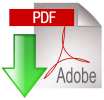This study was designed to evaluate the in vitro antioxidant and anti-hemolytic activity of aqueous leaf extract of Hibiscus sabdariffa and methanol fruit extract Abelmoschus esculentus. They are both commonly consumed vegetables in Nigeria. The percentage inhibition of DPPH radical scavenging activity of the extracts and the standard ascorbic showed that the aqueous leaf extract of H. sabdariffa exhibited higher antioxidant activity than the A. esculentus methanol fruit extract. The IC50 of H. sabdariffa (2.81 mg/ml) was lower than A. esculentus (3.20 mg/ml) with respect to the standard ascorbic acid (2.29 mg/ml). The result from the FRAP assay also showed that extract of H. sabdariffa exhibited better antioxidant capacity than the A. esculentus extract. The IC50 of H. sabdariffa (2.97 mg/ml) was lower than A. esculentus (3.77 mg/ml) in comparison to ascorbic acid (2.01 mg/ml). Also, percentage inhibitions of anti-hemolytic activity of aqueous leaf extract of H. sabdariffa, methanol fruit extract A. esculentus, and the standard quercetin showed that the aqueous leaf extract of H. sabdariffa exhibited higher anti-hemolytic activity than the A. esculentus extract. The IC50 of H. sabdariffa (3.35 mg/ml) was lower than A. esculentus (3.89 mg/ml) in comparison to quercetin (1.96 mg/ml). From this study, H. sabdariffa extract could therefore potentially serve as a more suitable and potent agent against free radical mediated and hemolytic diseases. Published by Faculty of Life Sciences Kebbi State University of Science and Technology, Aliero Nigeria.
Keywords: H. sabdariffa, A. esculentus, Hemolysis, Antioxidant, Red blood cells.

 Download PDF
Download PDF